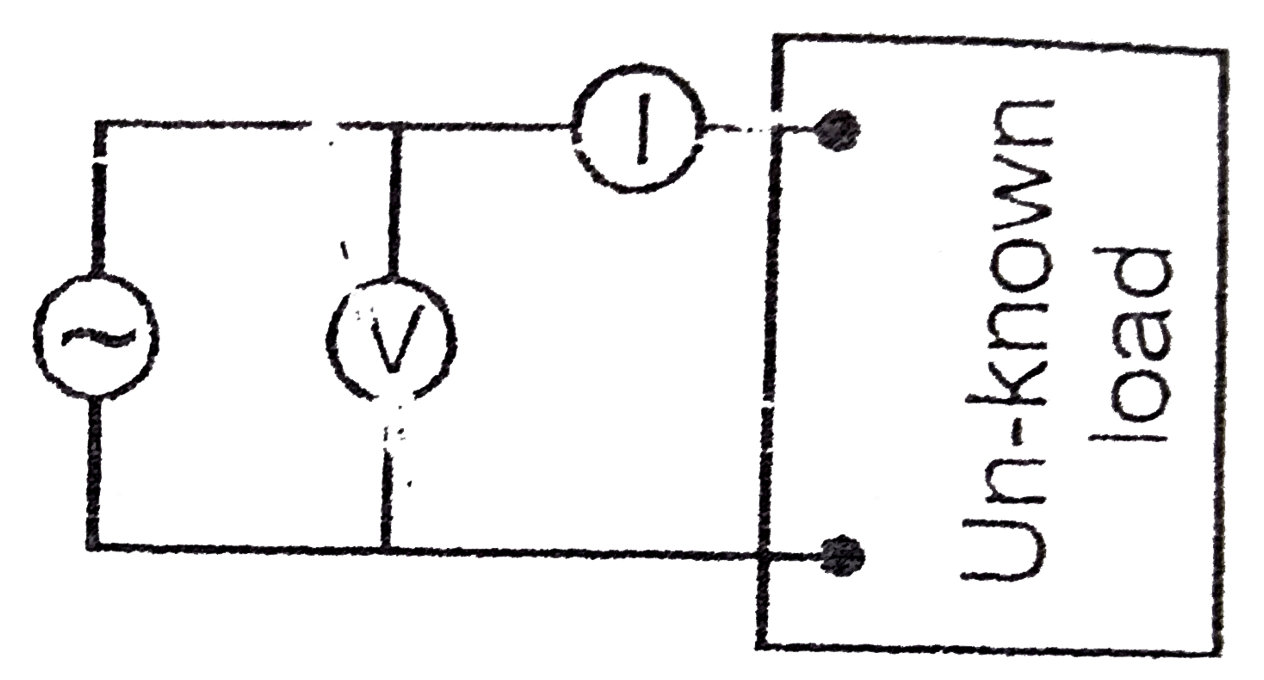An source rated supplies a current of to a circuit. The average power delivered by the source
must be 1000W
may be greater than 100W
may be less than 1000W
all of the above three are possible
The correct Answer is:C
To find the average power delivered by an AC source, we can use the formula:
Paverage=Vrms×Irms×cosϕ
Where:
- Paverage is the average power,
- Vrms is the root mean square voltage,
- Irms is the root mean square current, and
- cosϕ is the power factor, which represents the phase difference between the voltage and current.
Step 1: Identify the given values
- Vrms=100V
- Irms=10A
Step 2: Substitute the values into the power formula
We substitute the values into the formula:
Paverage=100V×10A×cosϕ
Step 3: Simplify the equation
This simplifies to:
Paverage=1000W×cosϕ
Step 4: Determine the range of cosϕ
The value of cosϕ can range from 0 to 1 (since power cannot be negative). Therefore:
- If cosϕ=1, then Paverage=1000W
- If cosϕ=0, then Paverage=0W
Step 5: Conclusion
Thus, the average power delivered by the source can range from 0 W to 1000 W. Therefore, the average power can be less than 1000 W, and the correct option is that it may be less than 1000 W.
Final Answer:
The average power delivered by the source can be anything between 0 W and 1000 W.
---
- Paverage is the average power,
- Vrms is the root mean square voltage,
- Irms is the root mean square current, and
- cosϕ is the power factor, which represents the phase difference between the voltage and current.
- Vrms=100V
- Irms=10A
We substitute the values into the formula:
This simplifies to:
The value of cosϕ can range from 0 to 1 (since power cannot be negative). Therefore:
- If cosϕ=0, then Paverage=0W
Thus, the average power delivered by the source can range from 0 W to 1000 W. Therefore, the average power can be less than 1000 W, and the correct option is that it may be less than 1000 W.
The average power delivered by the source can be anything between 0 W and 1000 W.
Topper's Solved these Questions
- MISCELLANEOUS VOLUME 5Book:CENGAGE PHYSICS ENGLISHChapter:MISCELLANEOUS VOLUME 5Exercise:Multiple Correct
Explore 34 Videos
- MISCELLANEOUS VOLUME 5Book:CENGAGE PHYSICS ENGLISHChapter:MISCELLANEOUS VOLUME 5Exercise:Linked Comprehension
Explore 84 Videos
- MISCELLANEOUS VOLUME 3Book:CENGAGE PHYSICS ENGLISHChapter:MISCELLANEOUS VOLUME 3Exercise:True and False
Explore 3 Videos
- NUCLEAR PHYSICSBook:CENGAGE PHYSICS ENGLISHChapter:NUCLEAR PHYSICSExercise:ddp.5.5
Explore 14 Videos
Similar Questions
An ac generator G with an adjustable frequency of oscillation is used in the circuit, as shown.

If the ac source G is 100V rating at resonant frequency of the circuit, then average power supplied by the source is
View SolutionAn ac generator G with an adjustable frequency of oscillation is used in the circuit, as shown.

If the ac source G is 100V rating at resonant frequency of the circuit, then average power supplied by the source is
View SolutionAn ac generator G with an adjustable frequency of oscillation is used in the circuit, as shown.

If the ac source G is 100V rating at resonant frequency of the circuit, then average power supplied by the source is
View SolutionIn an L−C−R ereis circuit R=150Ω,L=0.0750H and C=0.0180μF . The source has voltage amplitude V=150V and a frequencey equal to the resonacne frequency of the circuit.
(a) What is the power factor ?
(b) What is the average power delivered by the source?
(c) The capacitor is replaced by one with C=0.0360μF and the source frequency is adjusted to the new resonance value. Then, what is the average power delivered by the source?
View SolutionThe ideal meter shown in figure read rms current and voltage. The average power delivered to the load is

View SolutionAn L−C−R series circuit with L=0.120H,R=240a, and C=7.30μF carries an rms current of 0.450A with a frequency of 400Hz.
(a) What are the phase angle and power factor for this circuit?
(b) What is the impedance of the circuit?
(c) What is the rms voltage of the source?
(d) What average power is delivered by the source?
(e) What is the average rate at which electrical energy is converted to thermal energy in the resistor?
(f) What is the average rate at which electrical energy is dissipated ( converted to other forms) in the capacitor?
(g) In the inductor ?
View SolutionA circuit containing an inductance and a resistance connected in series, has an AC source of 200V, 50Hz connected across it. An AC current of 10A rms flows through th ecircuit and the power loss is measured to be 1W.
View SolutionAn inductor coil joined to a 6V battery draws a steady current of 12A. This coil is connected to a capacitor and an AC source of rms voltage 6V in series. If the current in the circuit is in phase with the emf, find the rms current.
View SolutionIn the figure shown an ideal alternative current (A,C) source of 10 Volt is connected. Find half of the total average power (in watts) given by the source to the circuit.

View SolutionIn the figure shown an ideal alternative current (A,C) source of 10 Volt is connected. Find half of the total average power (in watts) given by the source to the circuit.

View Solution